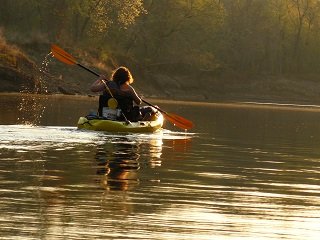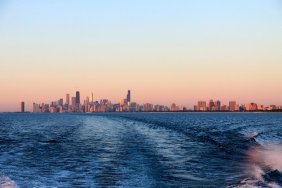 Kayaking is a great way to enjoy the outdoors, and it’s one that thousands of people participate in throughout the year. However, when it comes to longer day trips on the river or lake, some careful planning is crucial. Not only will your gear and skill need to be up to snuff, but you’ll want to be sure to carefully plan your designated route ahead of time. Here are a few tips on how to do before your next kayaking trip.
Kayaking is a great way to enjoy the outdoors, and it’s one that thousands of people participate in throughout the year. However, when it comes to longer day trips on the river or lake, some careful planning is crucial. Not only will your gear and skill need to be up to snuff, but you’ll want to be sure to carefully plan your designated route ahead of time. Here are a few tips on how to do before your next kayaking trip.
One thing you’ll want to look for is natural hazards, such as rapids, stretches of exposed water, and potentially dangerous land formations, such as bottleneck canyons or steep-walled valleys. Generally, it’s smart to avoid natural route hazards as much as possible, but if you can’t, at least make sure everyone in your group can handle the hazards you’ll be encountering.
Aside from natural obstacles, you’ll also want to keep an eye out for man-made hazards along your route. These include things like dams, low bridges, and off-limits areas like wildlife refuges or private property. Take these into consideration as your plan your trip and make sure you can get around them safely.
When you plan a route, try to plan it so you’ll have ready access to accessible landing and launching zones. These locations should be easy to reach from both the land and the water, and they should be well spaced throughout the route, in case conditions force you to seek shelter.
Along those same lines, be sure to take note of portage routes, which are pathways that allow paddlers to bypass difficult stretches of water by traveling from one body of water to another. Long portage routes can be difficult, especially if the terrain is tough or your boats and gear are heavy. If you're a beginner, try to avoid portages as much as possible, but if you have to use them, ask other paddlers or the local land manager to make sure they are well-marked and well maintained.
For longer trips that require overnight camping, try to locate established sites along your route. This will make camping easier and help keep your impact on the surrounding ecosystem to a minimum. If your route falls within an area without established campsites, though, make sure there are safe, accessible locations throughout the route for setting up camp.
Lastly, enjoying the outdoors is just about that: enjoying them. This means have fun! That being said, exciting non-paddling activities can be a major part of kayaking memories. Keep your eyes open for attractions like hiking trails, hidden beaches, or rare views along your route to make your trip that much more memorable!
Kayaking is a lot of fun, but failing to plot out a safe, enjoyable route ahead of time can spell disaster before your oars hit the water. Doing some research beforehand will go a long way towards ensuring a great trip filled with peace of mind and fun for all involved.








